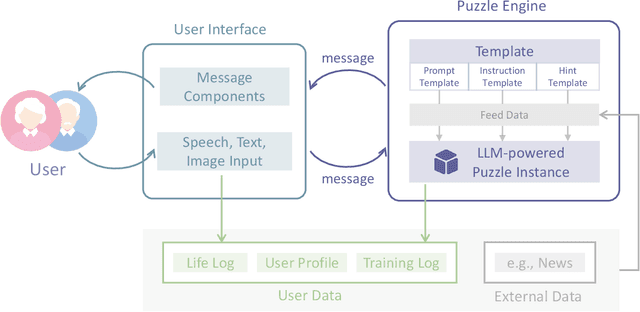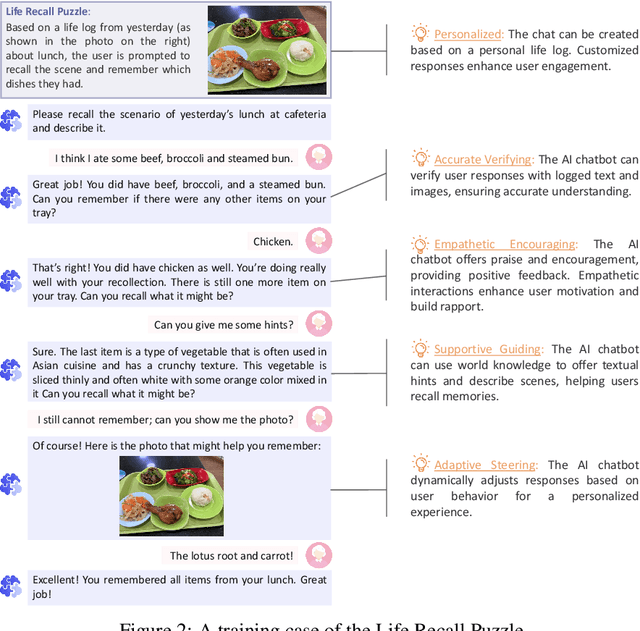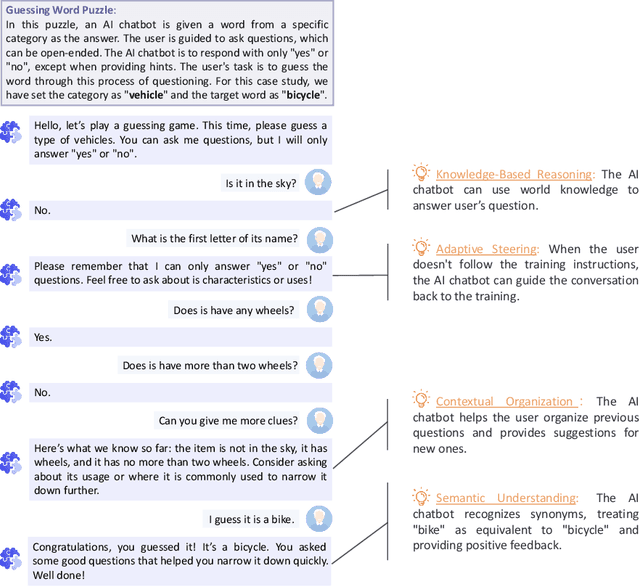Shiqi Jiang
Advancing Mobile GUI Agents: A Verifier-Driven Approach to Practical Deployment
Mar 21, 2025Abstract:We propose V-Droid, a mobile GUI task automation agent. Unlike previous mobile agents that utilize Large Language Models (LLMs) as generators to directly generate actions at each step, V-Droid employs LLMs as verifiers to evaluate candidate actions before making final decisions. To realize this novel paradigm, we introduce a comprehensive framework for constructing verifier-driven mobile agents: the discretized action space construction coupled with the prefilling-only workflow to accelerate the verification process, the pair-wise progress preference training to significantly enhance the verifier's decision-making capabilities, and the scalable human-agent joint annotation scheme to efficiently collect the necessary data at scale. V-Droid sets a new state-of-the-art task success rate across several public mobile task automation benchmarks: 59.5% on AndroidWorld, 38.3% on AndroidLab, and 49% on MobileAgentBench, surpassing existing agents by 9.5%, 2.1%, and 9%, respectively. Furthermore, V-Droid achieves an impressively low latency of 0.7 seconds per step, making it the first mobile agent capable of delivering near-real-time, effective decision-making capabilities.
StreamMind: Unlocking Full Frame Rate Streaming Video Dialogue through Event-Gated Cognition
Mar 08, 2025Abstract:With the rise of real-world human-AI interaction applications, such as AI assistants, the need for Streaming Video Dialogue is critical. To address this need, we introduce \sys, a video LLM framework that achieves ultra-FPS streaming video processing (100 fps on a single A100) and enables proactive, always-on responses in real time, without explicit user intervention. To solve the key challenge of the contradiction between linear video streaming speed and quadratic transformer computation cost, we propose a novel perception-cognition interleaving paradigm named ''event-gated LLM invocation'', in contrast to the existing per-time-step LLM invocation. By introducing a Cognition Gate network between the video encoder and the LLM, LLM is only invoked when relevant events occur. To realize the event feature extraction with constant cost, we propose Event-Preserving Feature Extractor (EPFE) based on state-space method, generating a single perception token for spatiotemporal features. These techniques enable the video LLM with full-FPS perception and real-time cognition response. Experiments on Ego4D and SoccerNet streaming tasks, as well as standard offline benchmarks, demonstrate state-of-the-art performance in both model capability and real-time efficiency, paving the way for ultra-high-FPS applications, such as Game AI Copilot and interactive media.
Interleaved Block-based Learned Image Compression with Feature Enhancement and Quantization Error Compensation
Feb 21, 2025Abstract:In recent years, learned image compression (LIC) methods have achieved significant performance improvements. However, obtaining a more compact latent representation and reducing the impact of quantization errors remain key challenges in the field of LIC. To address these challenges, we propose a feature extraction module, a feature refinement module, and a feature enhancement module. Our feature extraction module shuffles the pixels in the image, splits the resulting image into sub-images, and extracts coarse features from the sub-images. Our feature refinement module stacks the coarse features and uses an attention refinement block composed of concatenated three-dimensional convolution residual blocks to learn more compact latent features by exploiting correlations across channels, within sub-images (intra-sub-image correlations), and across sub-images (inter-sub-image correlations). Our feature enhancement module reduces information loss in the decoded features following quantization. We also propose a quantization error compensation module that mitigates the quantization mismatch between training and testing. Our four modules can be readily integrated into state-of-the-art LIC methods. Experiments show that combining our modules with Tiny-LIC outperforms existing LIC methods and image compression standards in terms of peak signal-to-noise ratio (PSNR) and multi-scale structural similarity (MS-SSIM) on the Kodak dataset and the CLIC dataset.
FD-LSCIC: Frequency Decomposition-based Learned Screen Content Image Compression
Feb 21, 2025Abstract:The learned image compression (LIC) methods have already surpassed traditional techniques in compressing natural scene (NS) images. However, directly applying these methods to screen content (SC) images, which possess distinct characteristics such as sharp edges, repetitive patterns, embedded text and graphics, yields suboptimal results. This paper addresses three key challenges in SC image compression: learning compact latent features, adapting quantization step sizes, and the lack of large SC datasets. To overcome these challenges, we propose a novel compression method that employs a multi-frequency two-stage octave residual block (MToRB) for feature extraction, a cascaded triple-scale feature fusion residual block (CTSFRB) for multi-scale feature integration and a multi-frequency context interaction module (MFCIM) to reduce inter-frequency correlations. Additionally, we introduce an adaptive quantization module that learns scaled uniform noise for each frequency component, enabling flexible control over quantization granularity. Furthermore, we construct a large SC image compression dataset (SDU-SCICD10K), which includes over 10,000 images spanning basic SC images, computer-rendered images, and mixed NS and SC images from both PC and mobile platforms. Experimental results demonstrate that our approach significantly improves SC image compression performance, outperforming traditional standards and state-of-the-art learning-based methods in terms of peak signal-to-noise ratio (PSNR) and multi-scale structural similarity (MS-SSIM).
The Potential and Value of AI Chatbot in Personalized Cognitive Training
Oct 25, 2024


Abstract:In recent years, the rapid aging of the global population has led to an increase in cognitive disorders, such as Alzheimer's disease, presenting significant public health challenges. Although no effective treatments currently exist to reverse Alzheimer's, prevention and early intervention, including cognitive training, are critical. This report explores the potential of AI chatbots in enhancing personalized cognitive training. We introduce ReMe, a web-based framework designed to create AI chatbots that facilitate cognitive training research, specifically targeting episodic memory tasks derived from personal life logs. By leveraging large language models, ReMe provides enhanced user-friendly, interactive, and personalized training experiences. Case studies demonstrate ReMe's effectiveness in engaging users through life recall and open-ended language puzzles, highlighting its potential to improve cognitive training design. Despite promising results, further research is needed to validate training effectiveness through large-scale studies that include cognitive ability evaluations. Overall, ReMe offers a promising approach to personalized cognitive training, utilizing AI capabilities to meet the growing demand for non-pharmacological interventions in cognitive health, with future research aiming to expand its applications and efficacy.
Making Every Frame Matter: Continuous Video Understanding for Large Models via Adaptive State Modeling
Oct 19, 2024Abstract:Video understanding has become increasingly important with the rise of multi-modality applications. Understanding continuous video poses considerable challenges due to the fast expansion of streaming video, which contains multi-scale and untrimmed events. We introduce a novel system, C-VUE, to overcome these issues through adaptive state modeling. C-VUE has three key designs. The first is a long-range history modeling technique that uses a video-aware approach to retain historical video information. The second is a spatial redundancy reduction technique, which enhances the efficiency of history modeling based on temporal relations. The third is a parallel training structure that incorporates the frame-weighted loss to understand multi-scale events in long videos. Our C-VUE offers high accuracy and efficiency. It runs at speeds >30 FPS on typical edge devices and outperforms all baselines in accuracy. Moreover, applying C-VUE to a video foundation model as a video encoder in our case study resulted in a 0.46-point enhancement (on a 5-point scale) on the in-distribution dataset, and an improvement ranging from 1.19\% to 4\% on zero-shot datasets.
SPAC: Sampling-based Progressive Attribute Compression for Dense Point Clouds
Sep 16, 2024Abstract:We propose an end-to-end attribute compression method for dense point clouds. The proposed method combines a frequency sampling module, an adaptive scale feature extraction module with geometry assistance, and a global hyperprior entropy model. The frequency sampling module uses a Hamming window and the Fast Fourier Transform to extract high-frequency components of the point cloud. The difference between the original point cloud and the sampled point cloud is divided into multiple sub-point clouds. These sub-point clouds are then partitioned using an octree, providing a structured input for feature extraction. The feature extraction module integrates adaptive convolutional layers and uses offset-attention to capture both local and global features. Then, a geometry-assisted attribute feature refinement module is used to refine the extracted attribute features. Finally, a global hyperprior model is introduced for entropy encoding. This model propagates hyperprior parameters from the deepest (base) layer to the other layers, further enhancing the encoding efficiency. At the decoder, a mirrored network is used to progressively restore features and reconstruct the color attribute through transposed convolutional layers. The proposed method encodes base layer information at a low bitrate and progressively adds enhancement layer information to improve reconstruction accuracy. Compared to the latest G-PCC test model (TMC13v23) under the MPEG common test conditions (CTCs), the proposed method achieved an average Bjontegaard delta bitrate reduction of 24.58% for the Y component (21.23% for YUV combined) on the MPEG Category Solid dataset and 22.48% for the Y component (17.19% for YUV combined) on the MPEG Category Dense dataset. This is the first instance of a learning-based codec outperforming the G-PCC standard on these datasets under the MPEG CTCs.
Advancing Multi-Modal Sensing Through Expandable Modality Alignment
Jul 25, 2024Abstract:Sensing technology is widely used for comprehending the physical world, with numerous modalities explored in past decades. While there has been considerable work on multi-modality learning, they all require data of all modalities be paired. How to leverage multi-modality data with partially pairings remains an open problem. To tackle this challenge, we introduce the Babel framework, encompassing the neural network architecture, data preparation and processing, as well as the training strategies. Babel serves as a scalable pre-trained multi-modal sensing neural network, currently aligning six sensing modalities, namely Wi-Fi, mmWave, IMU, LiDAR, video, and depth. To overcome the scarcity of complete paired data, the key idea of Babel involves transforming the N-modality alignment into a series of two-modality alignments by devising the expandable network architecture. This concept is also realized via a series of novel techniques, including the pre-trained modality tower that capitalizes on available single-modal networks, and the adaptive training strategy balancing the contribution of the newly incorporated modality with the previously established modality alignment. Evaluation demonstrates Babel's outstanding performance on eight human activity recognition datasets, compared to various baselines e.g., the top multi-modal sensing framework, single-modal sensing networks, and multi-modal large language models. Babel not only effectively fuses multiple available modalities (up to 22% accuracy increase), but also enhance the performance of individual modality (12% averaged accuracy improvement). Case studies also highlight exciting application scenarios empowered by Babel, including cross-modality retrieval (i.e., sensing imaging), and bridging LLM for sensing comprehension.
Global Spatial-Temporal Information-based Residual ConvLSTM for Video Space-Time Super-Resolution
Jul 11, 2024Abstract:By converting low-frame-rate, low-resolution videos into high-frame-rate, high-resolution ones, space-time video super-resolution techniques can enhance visual experiences and facilitate more efficient information dissemination. We propose a convolutional neural network (CNN) for space-time video super-resolution, namely GIRNet. To generate highly accurate features and thus improve performance, the proposed network integrates a feature-level temporal interpolation module with deformable convolutions and a global spatial-temporal information-based residual convolutional long short-term memory (convLSTM) module. In the feature-level temporal interpolation module, we leverage deformable convolution, which adapts to deformations and scale variations of objects across different scene locations. This presents a more efficient solution than conventional convolution for extracting features from moving objects. Our network effectively uses forward and backward feature information to determine inter-frame offsets, leading to the direct generation of interpolated frame features. In the global spatial-temporal information-based residual convLSTM module, the first convLSTM is used to derive global spatial-temporal information from the input features, and the second convLSTM uses the previously computed global spatial-temporal information feature as its initial cell state. This second convLSTM adopts residual connections to preserve spatial information, thereby enhancing the output features. Experiments on the Vimeo90K dataset show that the proposed method outperforms state-of-the-art techniques in peak signal-to-noise-ratio (by 1.45 dB, 1.14 dB, and 0.02 dB over STARnet, TMNet, and 3DAttGAN, respectively), structural similarity index(by 0.027, 0.023, and 0.006 over STARnet, TMNet, and 3DAttGAN, respectively), and visually.
OMR-NET: a two-stage octave multi-scale residual network for screen content image compression
Jul 11, 2024



Abstract:Screen content (SC) differs from natural scene (NS) with unique characteristics such as noise-free, repetitive patterns, and high contrast. Aiming at addressing the inadequacies of current learned image compression (LIC) methods for SC, we propose an improved two-stage octave convolutional residual blocks (IToRB) for high and low-frequency feature extraction and a cascaded two-stage multi-scale residual blocks (CTMSRB) for improved multi-scale learning and nonlinearity in SC. Additionally, we employ a window-based attention module (WAM) to capture pixel correlations, especially for high contrast regions in the image. We also construct a diverse SC image compression dataset (SDU-SCICD2K) for training, including text, charts, graphics, animation, movie, game and mixture of SC images and NS images. Experimental results show our method, more suited for SC than NS data, outperforms existing LIC methods in rate-distortion performance on SC images. The code is publicly available at https://github.com/SunshineSki/OMR Net.git.
* 7 figures, 2 tables
 Add to Chrome
Add to Chrome Add to Firefox
Add to Firefox Add to Edge
Add to Edge